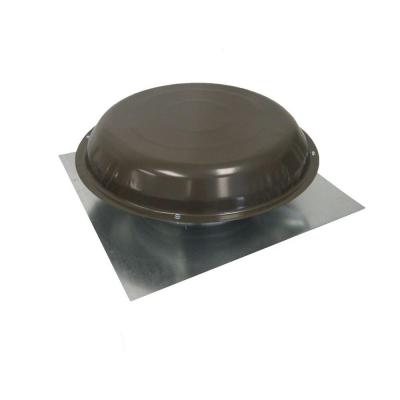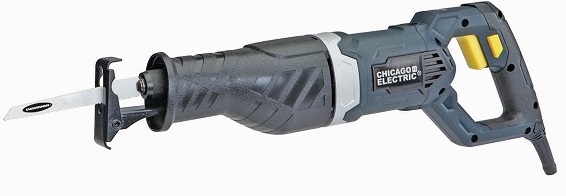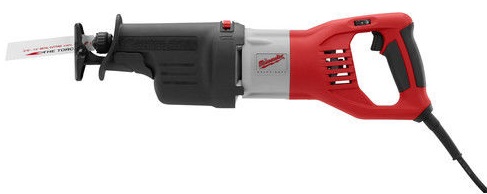I'm posting this because I decided to add an additional roof or attic heat vent fan to the shop , I called a local roofer to get an estimate on the cost, I was quoted $175 for the duct-ed roof fan and $550 labor for the install, look at the links below and you will get a good idea how inflated those cost estimates are.
you should have at least two widely separated as practicable, powered fan roof vents regardless for the square footage of floor space, and ideally, have them on thermal controls, look closely at the cfm rating on the roof exhaust fans, you need fans that clear the shop reasonably effectively, ,do the math, example
my shops about 36 ft deep 80 feet long and 16 ft tall to the bottom of the rafters
or about 46,000 cubic feet not counting the area above the rafters , (easily 10k more volume, two 1600 cfm fans would, in theory, take about 15 minutes to pull the air volume out through the vents, but in reality it will take over 30-40 minutes, that's totally un-exceptable, you need a minimum of 4 of those fans installed

http://www.homedepot.com/p/Ventamat...Attic-Roof-Ventilator-CX4000AMWGUPS/202913782
https://www.homedepot.com/p/Master-...Power-Roof-Mount-Attic-Fan-ERV6SMWW/205924959
a great deal of the rust issue most of us have can be reduced by proper planing,
tools should ideally be stored in a near moisture free area.
with good ventilation and no big temp changes that tend to allow condensation,
to form on tools or components in storage.
if your planing a shop, mandate the contractor takes the time to place, both a multiple plastic layer moisture barrier under the concrete floor of your shop
, and spray a strong residual insecticide for termites under the concrete slab,
before its poured., this will help a great deal,
if you bought a building that has no moisture barrier under the poured slab, you should consider the better epoxy based floor coatings
and in either case roof vent fans and ceiling fans that keep the air moving reduce the chances of parts and tools rusting.
most of us have some type of tool chest and if you have the tools long enough,
your sure to have issues with surface rust forming on those tools,
if the area you store the tools in does not dry and well ventilated.
now most of us will have noticed the better quality tool trays have a felt or plastic pad on the drawer floor
,if you spray the pools with a mist of WD40 occasionally,
the lower surface tends to retain the residue and constant use of the tools,
and occasional preventive misting with the WD40 will greatly reduce the rust formation issues.
obviously if your tool chest does not have a lower drawer pad, (ideally thick felt of similar oil retaining material,)
you might want to carefully measure and install some floor in each drawer,
so that lower surface will retain some rust preventative oil the tools are stored on.
http://www.dayattherange.com/?page_id=3667
watch the video's
youll ideally want one 1600cfm fan for every 1500 sq feet of floor area as a minimum, but one 1600cfm fan for every 1000 sq feet of area is going to remove heat trapped in any rafter/attic area far more efficiently, and yes if you were too install 3-to-4 1600 cfm fans on a 2000-3000 sq foot shop it would make a very noticeable improved air flow, even though its much more than the minimal suggested flow rate. the minimum, rated air flow is BARELY adequate to remove moisture , ideally youll want to install several powered roof vent fans to significantly vent air at a rate significantly higher to maintain a dry comfortable work shop.
the idea here is to constantly vent otherwise trapped ,hot attic air and maintain a constant moving air flow thru the rafters as it tends to keep the rafters dry, and lower cooling costs and make ceiling fans cooling the shop more efficient, and effective
http://www.homedepot.com/p/Master-Flow- ... /100072633 $131.00 / each
(and ID bet money the fan the contractor has in mind is not this good)
BTW HF has several reciprocating saws,this ones got several good reviews ( at $60 I'm still thinking its not very good quality)

most of the cheaper reciprocating saw versions are total crap and can,t cut butter on a hot day,
Ive had several of the $29 and $39 versions and they are not worth the time to take out of the packaging in my opinion, both of the ones I was given as gifts, stalled easily against any resistance.
http://www.harborfreight.com/9-amp-heav ... -8664.html
heres a name brand (but at $230 its not cheap)

http://www.mscdirect.com/product/detail ... 9?fromRR=Y
you can,t clear a moisture issue until you identify and block the source of new moisture entering the area.
in some cases, in a shop or garage this moisture damages tools and cars,
blocking and removing this moisture will require a floor or wall sealing coating , but obviously you must keep the air flow rates reasonably high, and temperatures comparatively high compared to outside air, to keep moisture in the air from condensing , on cooler surfaces.
if you have moisture issues adding roof vents, ceiling fans and occasionally a decent high volume air flow heater too help force the moisture to evaporate and be held in suspension in the air flow so its far easier to force it out of the confined area.
http://garage.grumpysperformance.com/index.php?threads/larger-shop-heaters.2708/#post-7062
http://garage.grumpysperformance.com/index.php?threads/anybody-have-plans-for-a-small-garage.12140/
you should have at least two widely separated as practicable, powered fan roof vents regardless for the square footage of floor space, and ideally, have them on thermal controls, look closely at the cfm rating on the roof exhaust fans, you need fans that clear the shop reasonably effectively, ,do the math, example
my shops about 36 ft deep 80 feet long and 16 ft tall to the bottom of the rafters
or about 46,000 cubic feet not counting the area above the rafters , (easily 10k more volume, two 1600 cfm fans would, in theory, take about 15 minutes to pull the air volume out through the vents, but in reality it will take over 30-40 minutes, that's totally un-exceptable, you need a minimum of 4 of those fans installed

http://www.homedepot.com/p/Ventamat...Attic-Roof-Ventilator-CX4000AMWGUPS/202913782
https://www.homedepot.com/p/Master-...Power-Roof-Mount-Attic-Fan-ERV6SMWW/205924959
a great deal of the rust issue most of us have can be reduced by proper planing,
tools should ideally be stored in a near moisture free area.
with good ventilation and no big temp changes that tend to allow condensation,
to form on tools or components in storage.
if your planing a shop, mandate the contractor takes the time to place, both a multiple plastic layer moisture barrier under the concrete floor of your shop
, and spray a strong residual insecticide for termites under the concrete slab,
before its poured., this will help a great deal,
if you bought a building that has no moisture barrier under the poured slab, you should consider the better epoxy based floor coatings
and in either case roof vent fans and ceiling fans that keep the air moving reduce the chances of parts and tools rusting.
most of us have some type of tool chest and if you have the tools long enough,
your sure to have issues with surface rust forming on those tools,
if the area you store the tools in does not dry and well ventilated.
now most of us will have noticed the better quality tool trays have a felt or plastic pad on the drawer floor
,if you spray the pools with a mist of WD40 occasionally,
the lower surface tends to retain the residue and constant use of the tools,
and occasional preventive misting with the WD40 will greatly reduce the rust formation issues.
obviously if your tool chest does not have a lower drawer pad, (ideally thick felt of similar oil retaining material,)
you might want to carefully measure and install some floor in each drawer,
so that lower surface will retain some rust preventative oil the tools are stored on.
http://www.dayattherange.com/?page_id=3667
watch the video's
youll ideally want one 1600cfm fan for every 1500 sq feet of floor area as a minimum, but one 1600cfm fan for every 1000 sq feet of area is going to remove heat trapped in any rafter/attic area far more efficiently, and yes if you were too install 3-to-4 1600 cfm fans on a 2000-3000 sq foot shop it would make a very noticeable improved air flow, even though its much more than the minimal suggested flow rate. the minimum, rated air flow is BARELY adequate to remove moisture , ideally youll want to install several powered roof vent fans to significantly vent air at a rate significantly higher to maintain a dry comfortable work shop.
the idea here is to constantly vent otherwise trapped ,hot attic air and maintain a constant moving air flow thru the rafters as it tends to keep the rafters dry, and lower cooling costs and make ceiling fans cooling the shop more efficient, and effective
http://www.homedepot.com/p/Master-Flow- ... /100072633 $131.00 / each
(and ID bet money the fan the contractor has in mind is not this good)
BTW HF has several reciprocating saws,this ones got several good reviews ( at $60 I'm still thinking its not very good quality)

most of the cheaper reciprocating saw versions are total crap and can,t cut butter on a hot day,
Ive had several of the $29 and $39 versions and they are not worth the time to take out of the packaging in my opinion, both of the ones I was given as gifts, stalled easily against any resistance.
http://www.harborfreight.com/9-amp-heav ... -8664.html
heres a name brand (but at $230 its not cheap)
http://www.mscdirect.com/product/detail ... 9?fromRR=Y
you can,t clear a moisture issue until you identify and block the source of new moisture entering the area.
in some cases, in a shop or garage this moisture damages tools and cars,
blocking and removing this moisture will require a floor or wall sealing coating , but obviously you must keep the air flow rates reasonably high, and temperatures comparatively high compared to outside air, to keep moisture in the air from condensing , on cooler surfaces.
if you have moisture issues adding roof vents, ceiling fans and occasionally a decent high volume air flow heater too help force the moisture to evaporate and be held in suspension in the air flow so its far easier to force it out of the confined area.
http://garage.grumpysperformance.com/index.php?threads/larger-shop-heaters.2708/#post-7062
http://garage.grumpysperformance.com/index.php?threads/anybody-have-plans-for-a-small-garage.12140/
Last edited by a moderator:


